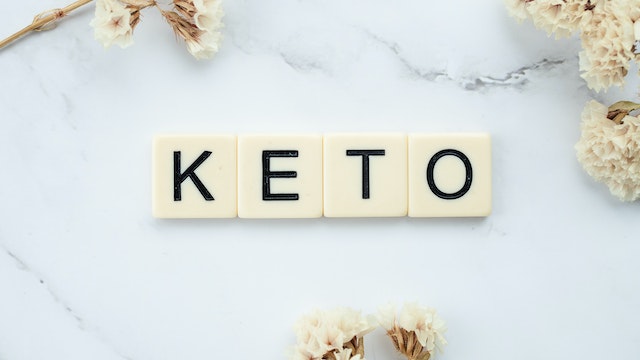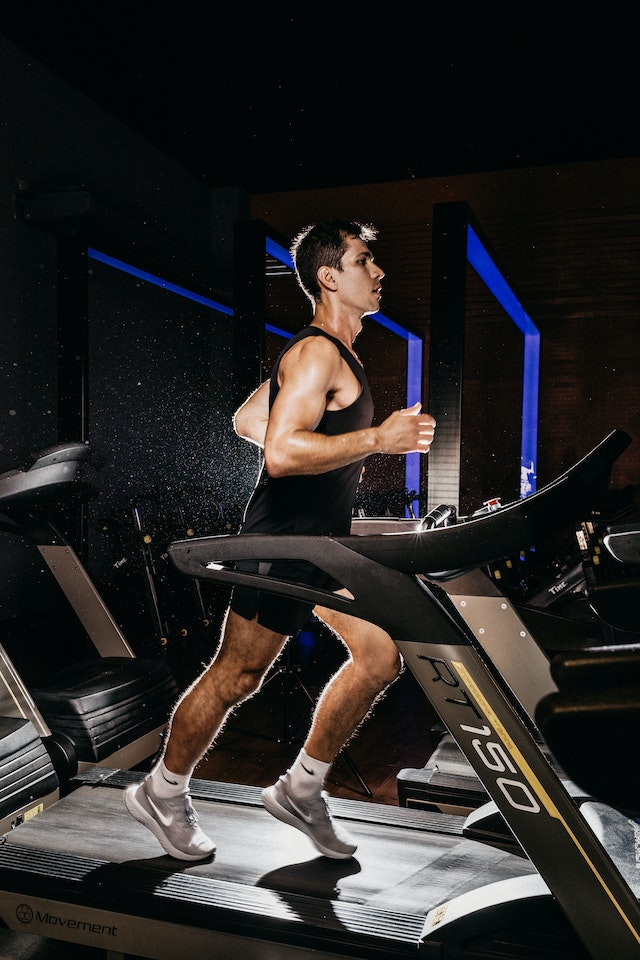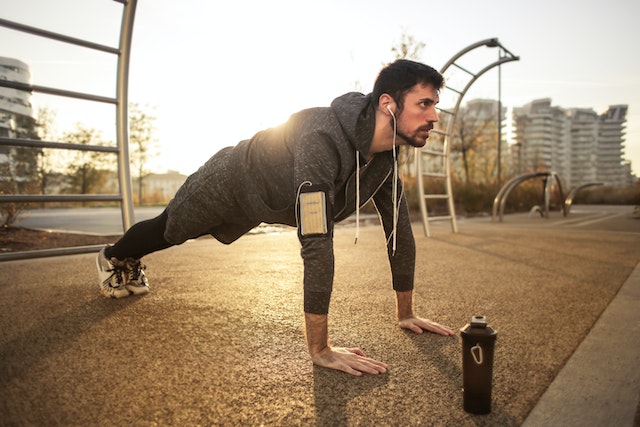Exercising on Keto: Optimize Your Workouts While in Ketosis
The ketogenic diet has surged in popularity, with many embracing fat as their primary fuel source. When combined with the right types of exercises, this diet can amplify fat-burning and muscle-building. But what are the best practices for exercising on keto?
Starting a ketogenic diet fitness routine can raise many questions, especially about its impact on workouts. Whether you’re a fitness newbie or a gym regular, we’ll clarify the connection between keto and exercise. In this guide, we’ll address those uncertainties and share how to combine keto with exercise effectively.
The Keto Diet
Historically, health experts used keto to treat epilepsy. Today, people widely recognize its potential to help people lose weight. So, what entails a keto diet?
People often call the “keto diet” the ketogenic diet. It focuses on consuming more fats, a moderate amount of proteins, and fewer carbs. Then what happens?
When you reduce your carb intake, your body runs low on its usual energy source: glucose. In response, it cleverly starts breaking down fats into ketones. When ketones reach a certain level in your bloodstream, your body enters ketosis. Hence, your body is in a state that is primarily using fats for fuel instead of sugars.
Think of it as your body’s natural backup generator. This is your body’s way of ensuring you’re fueled even with fewer carbs in your system.

Exercising on Keto: Why Is It Important?
Pairing keto with regular exercise is like adding turbo to your engine. Here are the benefits that you can get from exercising on keto:
1. It Enhances Fat Burning
You enhance fat burning by using fat as your main energy source on keto and adding aerobic exercise. This mix often results in faster weight loss.
2. It Improves Energy Levels
Once keto-adapted, your body efficiently utilizes ketones for energy. Adding workouts lets you tap into sustained energy for longer exercise sessions. This can help you avoid the usual energy crashes linked with glucose depletion.
3. It Preserves Muscle
Strength training on keto helps maintain or even build muscle mass. Dietary protein and ketones together protect your muscles. This ensures you lose fat, not muscle, during weight loss.
4. It Offers Cognitive Benefits
Ketones serve as brain fuel. Ketones boost mental clarity and focus, while regular exercise enhances cognition. Together, they promote a sharper, more attentive mind.
5. It Improves Heart Health
Regular workouts, especially cardio, are great for heart health. When combined with the keto diet’s positive impacts on cholesterol levels, you’re doubling down on heart-healthy behaviors.
6. It Enhances Metabolic Flexibility
Exercising on keto trains your body to burn fats more efficiently. This improves its ability to switch between fat and glucose as fuel, boosting overall metabolic health.
7. It Regulates Appetite
Both the keto diet and exercise can help control appetite. Ketones suppress hunger, and exercise regulates hunger hormones. Together, they can lead to a natural reduction in calorie intake, which is necessary for weight loss.
8. It Enhances Insulin Sensitivity
Exercise enhances insulin sensitivity and allows muscles to take in glucose effectively. The advantage increases when you combine exercise with the keto diet, which naturally reduces insulin spikes. This holds particular importance for those with or at risk of type 2 diabetes.

Best Exercise on Keto: Top Recommendations for You
What is the best exercise for keto? Let’s dive into the top exercises that align well with the ketogenic diet. That way, you can maximize its benefits for your body and health.
Aerobic Exercise (Cardio)
Aerobic exercise, often known as cardio, boosts heart rate through continuous and rhythmic activities. It helps improve your cardiovascular endurance.
- Brisk walking
- Running or jogging
- Cycling
- Swimming
- Rowing
- Zumba
- Elliptical training
- Treadmill workouts
- Spinning classes
- Kickboxing
- Nordic walking
Strength Training
Strength training on keto preserves muscle mass. This way, you lose fat and not lean muscle as you diet. Strength training targets and challenges specific muscle groups using resistance to increase muscle strength and size. This involves using free weights, machines, or your body weight.
Examples:
- Weight lifting (bench press, squats, deadlifts)
- Resistance band exercises
- Bodyweight exercises (push-ups, pull-ups, squats)
- Kettlebell routines
High-Intensity Interval Training (HIIT)
High-intensity interval Training (HIIT) consists of short bursts of intense exercise followed by rest or low-intensity recovery periods. Doing HIIT on keto helps burn fat faster in short, intense workouts.
This combination prompts the body to use fat for immediate energy. As a result, each workout becomes more effective for weight loss.
Examples:
- Sprint intervals
- Tabata workouts
- Jump rope intervals
- Burpee challenges
- High knees running in place
- Plyometric lunges
- Tuck jumps
- Box jumps
- Battle ropes
Flexibility and Balance Workouts
Flexibility and balance workouts enhance joint mobility, improve posture, and prevent injuries. They often combine stretches with balance exercises to promote well-being and muscle harmony.
Practicing flexibility and balance exercises on keto supports overall well-being. This ensures you remain limber and injury-free as your body adjusts to its new energy source.
Examples:
- Yoga (Vinyasa, Hatha, Ashtanga)
- Pilates mat exercises
- Tai Chi
- Dynamic stretching routines
Low-Intensity Steady-State Cardio (LISS)
Low-Intensity Steady-State Cardio (LISS) is a cardio workout where you sustain a relaxed pace for extended durations. LISS workouts usually take 30 minutes to an hour. It emphasizes steady effort that promotes fat burning and endurance minus the heavy, intense workouts.
Examples:
- Long walks
- Leisurely bike rides
- Slow-paced swimming
- Steady rowing sessions

Can You Lose Weight on Keto Without Exercise?
Yes, you can lose weight on keto without exercise. Just ensure you are diligently following the diet’s guidelines and are able to maintain the required caloric intake. However, while losing weight this way is possible, pairing keto with exercise can enhance weight loss results.
Can You Gain Muscle on Keto Without Exercise?
No, you cannot gain significant muscle on keto without exercise. In fact, gaining muscle without exercise is challenging, regardless of the diet you follow.
To genuinely build muscle mass, resistance or strength training is necessary. Yes, you can maintain muscle and possibly see minor gains from increased protein intake on keto. However, consistent and targeted physical exercise results in the most significant muscle growth.
Simply put, relying solely on the keto diet without incorporating strength training will not yield optimal muscle growth.

Challenges and Considerations for Exercising on Keto
Embracing the keto lifestyle while staying active brings its own set of challenges and considerations. Let’s delve into the specifics.
The Risks While Exercising on Keto
So, what can happen when you’re exercising on keto? What should you be ready for?
- You may experience an energy slump. Transitioning to keto might reduce your energy levels. This makes your initial workouts more challenging.
- You will have muscle cramps. On keto, decreased essential electrolytes like magnesium, potassium, and sodium levels might lead to muscle cramps during exercise.
- You are prone to dehydration. When you are on keto, you might lose more water weight. As a result, this can cause dehydration risks during workouts.
- Your glycogen stores will deplete. Muscle glycogen, which fuels high-intensity workouts, may decrease keto. This can affect your performance in short, intense sessions.
- You may experience “keto flu” symptoms. Transitioning to ketosis can bring about “keto flu” symptoms. You might feel fatigue, headaches, or nausea, which can disrupt your workout performance.
What To Do While Exercising on Keto?
- Embrace a gentle start. Don’t ever rush to get fast results. First, you have to give your body the grace to adjust at its own pace. Hence, start with easy workouts, then gradually increase the intensity bit by bit.
- Consume electrolyte-rich foods. Remember to nourish your body with foods or supplements rich in electrolytes to keep muscle cramps at bay.
- Quench your thirst: Make sure to stay hydrated all day, especially around your workout times.
- Be smart with your carb choices. Think about adding a touch of carbs before intense workouts. It’s a boost to fuel you and top up those glycogen stores.
- Incorporate protein in your diet. If you’re exercising often, think about fine-tuning your keto approach. Just including more protein in your diet can help your muscles heal and bounce. Note that muscles love protein. Just make sure to find your protein sweet spot to remain in ketosis.
- Listen to your body. Every keto journey is unique. Keep an ear to your body’s symphony and adjust your rhythm as needed.
Ignite Your Workouts With Keto!
The synergy between the keto diet and exercise offers a promising path to health and fitness. Individuals can optimize their fitness journey by understanding and tailoring workouts to the unique aspects of this diet.
Stay informed and optimize your fitness journey while you’re exercising on keto! Discover more insights, tips, and success stories by exploring other related articles on Modern Fit.


